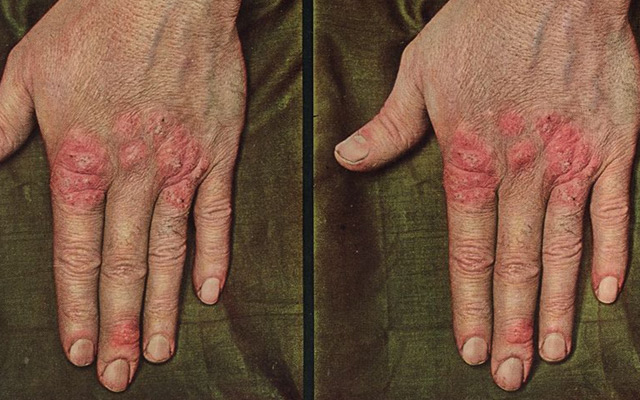Pediculosis Capitis
- Title
- Pediculosis Capitis
- Description
- Dermatologic stereoview card. Front of card shows a side view of a female's head that is infested with head lice. The reverse of the card describes the dermatologic conditions as well as the diagnosis and treatment. Pediculosis Capitis is one of three varieties of lice that infest man—Pediculus capitis, Pediculus corporis and Pediculus pubis. Pediculus capitis, the head louse, dwells exclusively on the scalp. It is 1 to 3 mm. long and about half as broad. The color is a translucent gray except along the lateral borders, which are almost black. Immediately after feeding, the animal gets a red tinge from the ingested blood. Each is firmly glued to the side of a hair with its larger end projecting away from the axis and toward the distal extremity of the shaft. Pediculosis Capitis may also be known as Pediculosis capillitii, Phthiriasis capitis, or Head-lousiness.
- Date
- 1910
- Original Format
- stereographs
- Extent
- Local Identifier
- LL02.49.00.61
- Creator(s)
- Subject(s)
- Spatial
- Location of Original
- Laupus Library History Collections
- Rights
-
This item has been made available for use in research, teaching, and private study. Researchers are responsible for using these materials in accordance with Title 17 of the United States Code and any other applicable statutes. If you are the creator or copyright holder of this item and would like it removed, please contact us at als_digitalcollections@ecu.edu.
http://rightsstatements.org/vocab/InC-EDU/1.0/ - Permalink
- https://digital.lib.ecu.edu/21167
- Preferred Citation
- Cite this item
- This item
-
 Pediculosis Capitis
Pediculosis Capitis
- My Collections Login
- Printable Feedback Form
- Found in theme/project
-
 Laupus Health Sciences History Collections
Laupus Health Sciences History Collections
-
 Health and Medicine
Health and Medicine
-
 Stereoscopic Skin Clinic
Stereoscopic Skin Clinic
- Location of Original
- Stereoscopic Skin Clinic Cards from the Laupus Library History Collections
- View all digitized items from the Stereoscopic Skin Clinic Cards
Related Search Results
Public access is provided to these resources to preserve the historical record. The content represents the opinions and actions of their creators and the culture in which they were produced. Therefore, some materials may contain language and imagery that is outdated, offensive and/or harmful. The content does not reflect the opinions, values, or beliefs of ECU Libraries.
Contact Digital Collections
If you know something about this item or would like to request additional information, click here.
Comment on This Item
Complete the fields below to post a public comment about the material featured on this page. The email address you submit will not be displayed and would only be used to contact you with additional comments or questions.


